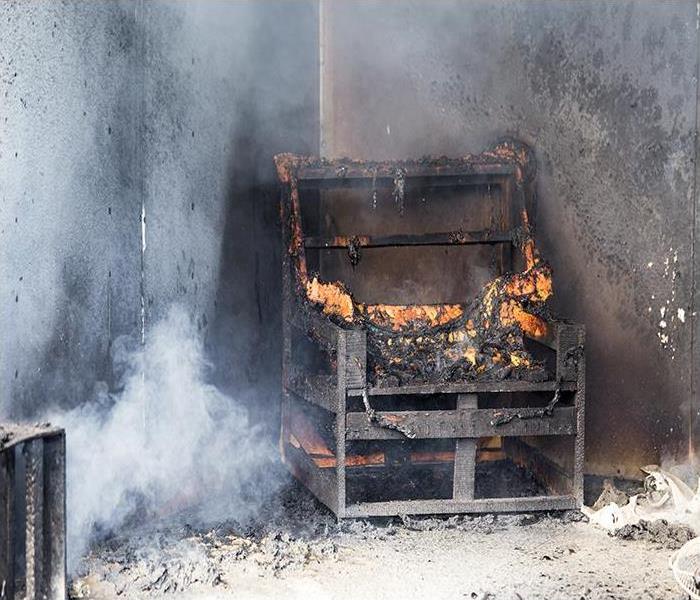Chicago's Fire Damage Technicians Explain Cleaning Soot Residues
5/8/2018 (Permalink)
 Smoke coming from a fire that burns a house in Chicago can leave behind soot residues and pungent, burnt odors.
Smoke coming from a fire that burns a house in Chicago can leave behind soot residues and pungent, burnt odors.
Fire Damage Technicians Explain Cleaning Soot Residues
Smoke coming from a fire that burns a house in Chicago can leave behind soot residues and pungent, burnt odors. Soot residues have different chemical compositions based upon what fuels were burned in the blaze. Some soot adheres better to certain surfaces than others.
When cleaning smoke damage, different methods get utilized to clean the various types of soils. The method and chemicals used to clean soot created by fire damage in Chicago depend upon what type of surface got affected. Porous surfaces are cleaned best using dry cleaning methods so that wet chemicals to do not soak the soot into the material. Hard, non-porous surface materials usually get cleaned using a wet chemical that is made specially to clean the type of soot present.
Many homes have wallpaper or other types of wall coverings on top of the drywall. Depending on what the wallpaper is made from can change the type of methods and chemicals used during restoration. Paper wall coverings are porous, so they get cleaned with dry sponges whereas vinyl and foil wallpapers resist moisture making wet cleaning the best method.
Most foil wallpapers have a glossy, metallic finish that does a decent job of repelling moisture. If acidic soot residues stay on the foil surface for too long, they can eat away and fade the shiny finish. Our SERVPRO technicians know that the best way to clean foil wallpapers is to use a wet cleaning solution and gently wipe the affected walls so that scrubbing does not ruin the metallic finish.
Some walls are covered with grasscloth which is any covering that consists of natural dried fibers such as hemp or flax woven together. These types of wall coverings are porous and can only be cleaned using dry methods. If the smoke damage is severe, then the hemp or flax fibers may be uncleanable and require removal.
Another type of wallpaper called flocked wall coverings consist of design-shaped fibers applied to the paper surface. Flocked wall coverings can only be dry cleaned since they are made of porous paper and fiber materials. It is best to gently wipe the walls with a dry sponge so that the friction does not pull off the flocked fibers.
Knowing which methods work best for various kinds of damage situations requires experience and knowledge in the restoration industry. For professional help with smoke-related issues, call SERVPRO of West Loop / Bucktown / Greektown at (773) 434-9100 seven days a week.
Click here for more about Chicago.






 24/7 Emergency Service
24/7 Emergency Service